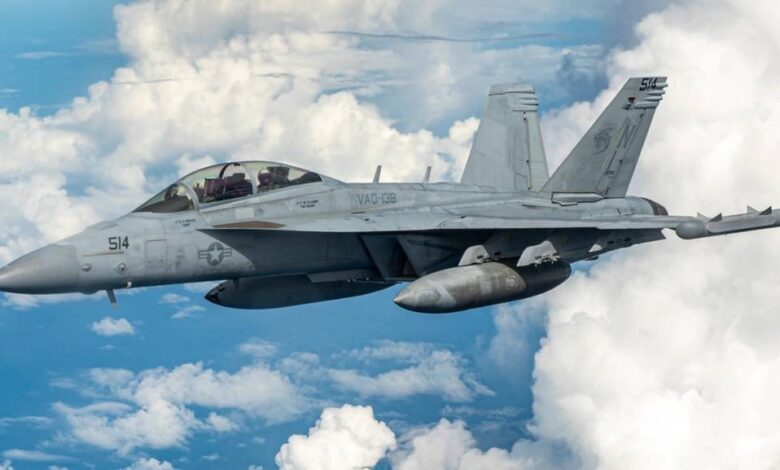5 strategies to speed adoption of AI and data analytics across the DOD

Our world is digital. Every day more than 300 million terabytes of data are created, collected and stored. Imagine a stack of books that stretches from the Earth to the Moon and back, and then do that 40,000 times. That’s approximately how much data we’re talking about.
In navigating this digital landscape, the Department of Defense stands at the precipice of transformation. By embracing advanced technologies, fostering a culture of data accessibility and collaboration, and ensuring personnel have a fundamental grasp of machine learning, the DoD is poised to unlock the full potential of data analytics and artificial intelligence. In doing so, it will strengthen its ability to make well-informed decisions, adapt to evolving challenges and secure our nation’s defense in an increasingly data-driven world.
The immense amount of data at our fingertips presents both an opportunity and a challenge. Within the Naval Aviation Enterprise, technological advancements have given rise to sensors and information collection systems that produce an unprecedented volume of data. While this data surge holds great potential to better understands the battlespace, it has also created an “information overload” that is now straining the Sailors and Marines tasked with making sense of this data.
To meet this challenge head-on, the DoD must continue to leverage these five strategies:
1. Improve data collection. The DoD’s commitment to investing in advanced sensors and collection platforms that generate data more efficiently is paramount. These systems must be designed with open architectures and industry standards to ensure seamless interoperability and scalability.
2. Overcome data silos. Standardized protocols and a secure, trustworthy cloud infrastructure should enable comprehensive data sharing across organizations within the DoD. This accessibility is key to fostering multisource intelligence fusion, enhancing collaboration and bolstering trust in data-driven decisions.
3. Harness the power of data analytics. Data analytics, including both traditional and advanced data science methods, can provide valuable insights by uncovering trends, anomalies and correlations within the massive data sets. These analytics can help identify critical patterns and generate actionable intel in real-time.
4. Sift through the data deluge with automation, AI and ML, and a well-informed workforce. Automation, AI and ML can process, analyze and categorize data more rapidly, reducing the workload on operators. While competitively reaching out to experts in industry and academia as an extended part of our team is vital, DoD civilian and military personnel should also possess a general understanding of AI/ML concepts. This knowledge empowers them to make well-informed decisions on where and when to apply these technologies effectively.
5. Use collaborative frameworks. Collaboration is the linchpin of success, particularly as the DoD transitions to centralized processing sites. User-friendly, collaborative tools and visualization techniques facilitate data analysis and understanding among decision-makers, even when geographically dispersed.
With these strategies in play, the DoD continues to integrate AI/ML technologies into its operations. A foundational aspect of this transformation is the development of a more coherent approach to AI and data, with an emphasis on aligning initiatives with dependable and pertinent data sources. Notably, the Naval Air Systems Command and its associated program offices stand at the forefront of these efforts.
NAVAIR is teaming with U.S. Naval Surface Force’s Task Force Hopper to explore fielding of AI-embedded sensors onto aircraft, exemplifying a collaborative framework approach across the Navy. This endeavor encompasses the deployment of a robust data architecture that seamlessly integrates sensor data. Additionally, it equips naval personnel with specialized AI and ML tools to manage the substantial volumes of data generated daily by both naval ships and aerial assets.
The growing imperative for AI-enabled naval systems to effectively counter evolving radio frequency threats has propelled cognitive electromagnetic warfare. At the forefront of this transformative landscape, the Airborne Electronic Attack Systems Program Office is pioneering groundbreaking developments.
The development of ML models tailored for the EA-18G Growler airborne electronic attack suite allows precise RF signal classification and fortifies EW capabilities in the face of agile, adaptive and potentially adversarial radar systems.
Another example of AI in action, the Unmanned Carrier Aviation Program Office is making significant progress with advanced autonomous air-to-air refueling. This cutting-edge endeavor aims to empower aerial systems with the capacity to acquire knowledge and adapt seamlessly to diverse unmanned aerial vehicles seeking safe aerial refueling, ultimately making fully autonomous refueling possible.
In order to ensure the workforce comprehensively embraces these technological advancements, NAVAIR offers a training program on the fundamentals and practical applications of AI, ML and deep learning. This course equips the workforce to adeptly oversee AI/ML projects and effectively engage with industry and academia experts who play pivotal roles in advancing AI on aircraft and other systems for the DoD.
The DoD has begun a transformative journey into the digital landscape, where data analytics and AI will shape the future of national defense. As it strategically integrates these technologies across its organization, the DoD will not only adapt to the data-driven world but thrive in it, safeguarding America and its allies for years to come.
Cmdr. Justin Letwinsky is the assistant program manager for systems and engineering for electronic warfare, and chief military advisor for AI/ML for Naval Air Systems Command. He is a MH-60 pilot with almost 20 years of experience as a naval officer. The views expressed are those of the author and do not necessarily reflect the views of Department of Defense or Department of the Navy.



